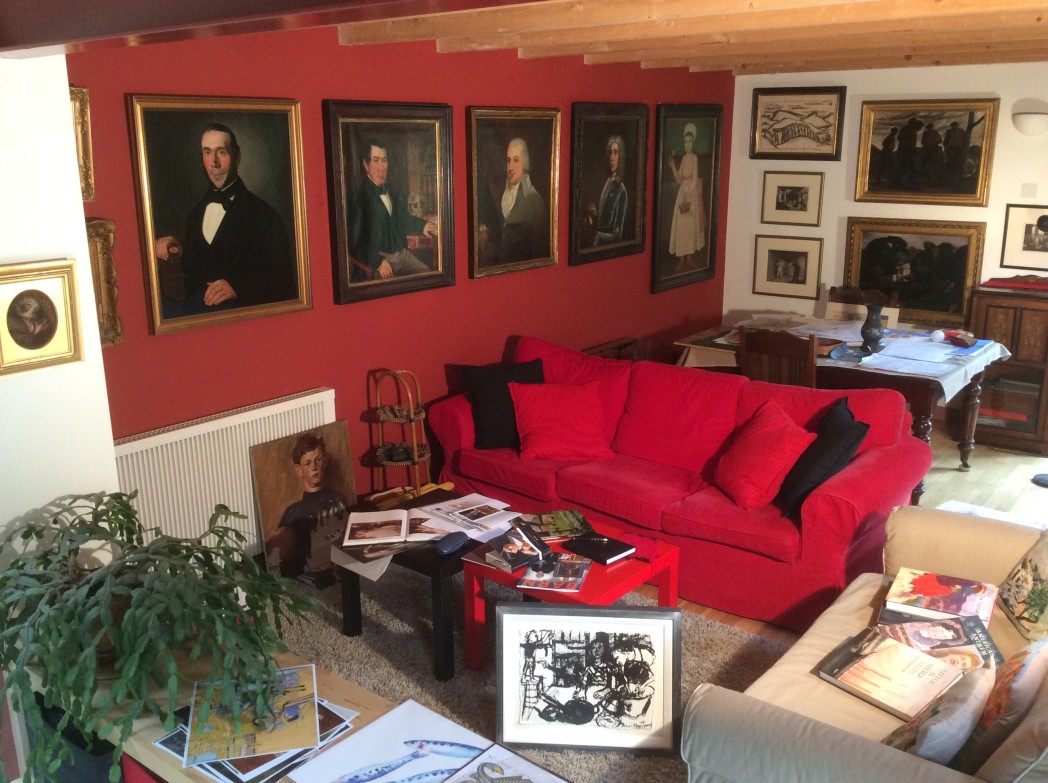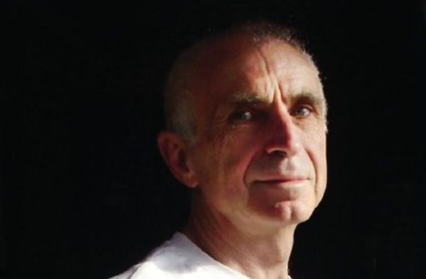Next in our Writers’ Rooms series is Peter Lord, Wales’ leading art historian. Lord’s latest work, Tradition: A New History of Welsh Art (Parthian Books), marks the beginning of a new era in appreciation of the canon of visual arts in Wales.

The editor has asked me to write about my ‘creative space’ and to do that in a series called ‘Writers’ Rooms’, but that puts me in a bit of a bind. They’re different places. This writer’s room, if that means the room where usually he writes, is not a room at all, but a corner of a room, about six feet square, isolated from the rest of the space by the back of a book case and a large (none too cheerful) painting by Archie Griffiths, set on an easel. There’s just enough room for a desk with a couple of computers and the associated detritus of wires leading to a printer and a scanner. Even if I could contrive a photograph of it, you wouldn’t find it interesting – no window, no view, no door, just a cell. But this isn’t really my creative space. This is the writing it down space. I’ve always written it down (or set it down – words or pictures) in spaces like this, because for me this part of the process, which is materialising the ideas, is an exercise in concentration on the page (or these days mostly the screen). I don’t want a window and I don’t want a door and most of all I don’t want noise. I can’t understand how some people work with music. Once I start to become aware of my surroundings, visual or acoustic, I’m finished. I don’t mind the cats, as long as they’re asleep.
That said, the creative space itself also presents a bit of a problem. I considered taking a photograph of the bath, or even worse, of the bath with me in it, a là Bonnard, because many of the best ideas happen there. Womb thing, I suppose, so perhaps not unrelated to the aforementioned cell. Warm water and enclosure, and the ideas seem to flow, somehow. It’s usually about making connections between things, and so constructing narrative paths – often out loud, I’m afraid. I deliver excellent lectures in the bath.
So I’m trying an experiment tonight, which is to bring two things together by writing this text in the creative space – though not the bath. Electrical equipment in the bath, not recommended. This is the other creative space, and I think the fundamental one, though it’s usually purely meditative. If that sounds pretentious, I’m sorry, but I can’t think of another word to express the process that goes on here. I work with things, and ideas about things, so I need the presence of those things – which in my case are pictures. Photos won’t do at all. Pictures are objects, not images. This important distinction has become blurred over the five hundred years since the invention of printing – and by the way, printed pictures pre-date printed texts, in the West anyway. I can’t speak about the Chinese, who got there first with moveable type, except I suppose that they were moveable pictograms in their case, and so the two things arrived together. But in the West, first of all engravings, then photographs, and now digitised light have progressively degraded the physicality of pictures, with their scratches and their dents and their clunky frames with bits of gilt missing and their dusty smell, if they’re old. It’s being in the presence of these things – walking towards them and away from them, touching them, moving them so that the relationship between them changes, or just simply experiencing intensely their tangible reality – that internalises them, and that’s where the really creative bit happens, largely in the subconscious. The rest is just writing it down – but writing it down as well as possible, of course, bringing craft to bear.
In the creative space the pictures hang all around me in the way that people used pictures in the eighteenth and nineteenth centuries, until interior designers invented themselves, and their function changed to something about looking nice. They became decorations. Before that, and for me still, it’s about being surrounded by a manifestation in objects of my self – by their physical presence the pictures reassure me that I am.
By the way, it didn’t work. I’m finishing this back in the cell.
Peter Lord’s Writers’ Rooms piece is a part of a Wales Arts Review series.












